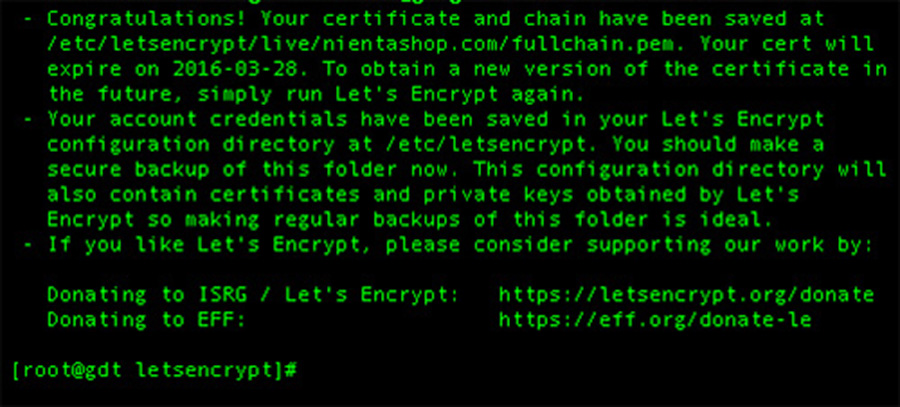Apache Tomcat is an open source web server and servlet container developed by the Apache Software Foundation. It implements the Java Servlet, JavaServer Pages (JSP), Java Unified Expression Language and Java WebSocket specifications from Sun Microsystems and provides a web server environment for Java code to run in.
This article assumes you have at least basic knowledge of linux, know how to use the shell, and most importantly, you host your site on your own VPS. The installation is quite simple and assumes you are running in the root account, if not you may need to add ‘sudo’ to the commands to get root privileges. I will show you through the step by step installation Apache Tomcat 8 on a Ubuntu 16.04 LTS (Xenial Xerus) server.
Install Apache Tomcat 8 on Ubuntu 16.04
Step 1. Installing Java (JRE or JDK).
Once you have verified if Java is installed or not, choose the type of Java installation that you want with one the following:
sudo apt-get install openjdk-7-jre sudo apt-get install openjdk-7-jdk
Another alternative Java install is with Oracle JRE and JDK. However, we would need to install additional repositories for a proper installation:
sudo apt-get install python-software-properties sudo add-apt-repository ppa:webupd8team/java
Then, you will need to fully update the system with the following command and install it:
sudo apt-get update sudo apt-get install oracle-java8-installer
Verify Installed Java Version.
java -version
Result:
java version "1.8.0_74" Java(TM) SE Runtime Environment (build 1.8.0_74-b02) Java HotSpot(TM) 64-Bit Server VM (build 25.74-b02, mixed mode)
Setup JAVA_HOME on Ubuntu 16.04.
Since many programs now days need a JAVA_HOME environment variable to work properly. We will need to find the appropriate path to make these changes. With the following command, you can view your installs and their path:
sudo update-alternatives --config java sudo nano /etc/profile
Now that you are in the user profile file, add the following code, along with the Path of your installation from the previous step, to the bottom. ( Example: JAVA_HOME=”YOUR_PATH”):
export JAVA_HOME="/usr/lib/jvm/java-1.8.0-openjdk-1.8.0.51-1.b16.el7_1.x86_64"
Reload the file so all your changes could take effect with the following command:
source /etc/profile
Verify that your implementations are correct with the following command:
echo $JAVA_HOME
Step 2. Installing Apache Tomcat.
First thing to do is to go to Apache Tomcat’s download page and download the latest stable version of Apache Tomcat, At the moment of writing this article it is version 8:
cd /opt wget http://a.mbbsindia.com/tomcat/tomcat-8/v8.0.35/bin/apache-tomcat-8.0.35.zip tar -xvf apache-tomcat-8.0.35.zip
Add tomcat user and group:
ln -s /opt/apache-tomcat-8.0.35 /opt/tomcat-latest chown -hR tomcat8: /opt/tomcat-latest /opt/apache-tomcat-8.0.35
Step 3. Configure environment variables.
Before starting Tomcat, configure CATALINA_HOME environment variable in your system using following commands.
# echo "export CATALINA_HOME=\"apache-tomcat-8.0.35\"" >> ~/.bashrc # source ~/.bashrc
Step 4. Configure Tomcat to run as a service.
cd /opt/apache-tomcat-8.0.35/bin ./startup.sh
You will get the following output.
Using CATALINA_BASE: /var/local/apache-tomcat-8.0.35 Using CATALINA_HOME: /var/local/apache-tomcat-8.0.35 Using CATALINA_TMPDIR: /var/local/apache-tomcat-8.0.35/temp Using JRE_HOME: /usr Using CLASSPATH: /var/local/apache-tomcat-8.0.35/bin/bootstrap.jar:/var/local/apache-tomcat-8.0.35/bin/tomcat-juli.jar Tomcat starte
You can verify the service running, by default tomcat runs on port no 8080.
[root@wpcademy ~]# netstat -antup | grep 8080 tcp 0 0 0.0.0.0:8080 0.0.0.0:* LISTEN 1 2 [root@wpcademy~]# netstat -antup | grep 8080 tcp 0 00.0.0.0:8080 0.0.0.0:* LISTEN
Step 5. Finally, open Tomcat from your browser, go to your IP or domain with the 8080 port (because Tomcat will always run on the 8080 port) as an example: mydomain.com:8080, replace mydomain.com with your IP or domain.
To shutdown Tomcat you can simply run the shutdown script in the same folder like this:
/opt/apache-tomcat-8.0.35/bin/shutdown.sh
Step 6. Setup user accounts.
Configure Tomcat users so they can access admin/manager sections. You can do this by adding the users in the conf/tomcat-users.xml file with your favorite text editor. Add this text to the file:
nano /opt/apache-tomcat-8.0.35/conf/server.xml
Place the following two lines just above the last line.
<!-- user manager can access only manager section --> <role rolename="manager-gui" /> <user username="manager" password="_SECRET_PASSWORD_" roles="manager-gui" /> <!-- user admin can access manager and admin section both --> <role rolename="admin-gui" /> <user username="admin" password="_SECRET_PASSWORD_" roles="manager-gui,admin-gui" />
Save and close the file when you are finished. To put our changes into effect, restart the Tomcat service:
systemctl restart tomcat
Congratulation’s! You have successfully installed Apache Tomcat. Thanks for using this tutorial for installing Apache Tomcat 8 in Ubuntu 16.04 LTS system. For additional help or useful information, we recommend you to check the official Apache Tomcat web site.







